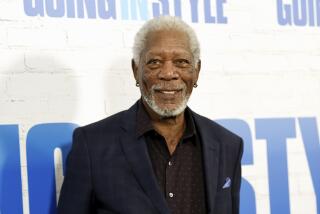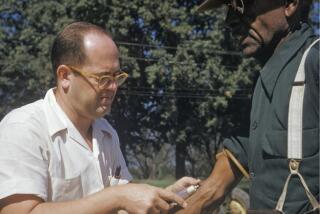COMMENTARY ON RACE RELATIONS : Media Have Role in Dispelling Stereotypes of Black Americans : Orange County has a disproportionate number of hate crimes against blacks. Meanwhile, the media zero in on racial issues and events. Is there a connection?
- Share via
A recent report by the Orange County Human Relations Commission shows 188 hate-related incidents and crimes documented in 1992.
The overwhelming majority of victims, 61, were African-Americans. The number of incidents against the group is startling when you consider that the 1990 census reports that African-Americans make up only 2% of the county’s population.
All hate crimes are senseless, therefore there are no reasonable explanations as to why they occur. There are, however, factors common to their cause, one of which is ignorance.
Most non-African-Americans know little about African-American lifestyles and continue to accept myths and stereotypes as truisms about them.
Negro History Week, which was instituted in 1956 by Dr. Carter G. Woodson, an African-American educator, was designed to offer some remedy to failures of the public school system to educate both African-Americans and the population in general about the group.
In time, the event grew to a monthlong celebration, Black History Month, that remained concentrated in its own communities.
Activities such as school assemblies and church and community programs were deemed appropriate. At the programs, community role models were recognized and presented as evidence to the youths of what they could achieve.
Newspapers, radio broadcasts and periodicals were used to communicate activities to the group. The problem with that was the limited number of people they could reach.
It was not until the early ‘60s--the time when television became standard equipment in American households--that black leaders began to hope to reach a wider audience. Their hopes were short-lived, however, when it became apparent that television was to entertain more than educate, and further, that African-Americans were not included in television programming.
Over the years the situation has changed somewhat. African-Americans have made great strides toward inclusion in television programming. Black faces now appear nationwide on TV screens daily.
The strides were not made without cost, however. The images more often than not are disproportionately negative and concentrated on the troubled elements of black American life, thus providing a distorted picture and further supporting myths about the group.
Criticism of the media presentation of African-Americans continues today in the black communities with charges of misrepresentation and unfair influencing against the group. This is of concern to African-Americans of all ages. For example, in a recent discussion we looked at the media’s coverage.
The American media have an overwhelming influence in forming world opinion. The images created by American movies, television shows, printed and broadcast news form the ideas and thoughts of people around the world.
American media’s obsession with oversimplifying issues into black versus white is infecting the international community.
Spanish-language media sources have adopted the negative practice of highlighting race when dealing with criminal acts and equating violence and drugs with African-American communities. In doing so, the Spanish-language media--like American media--overlook the complexities of each case and prefer to focus on the race of criminals.
News coverage of the Los Angeles riots stands as a glowing example of the American media’s habit of converting issues into arsenals for racism. The violence that ensued after the Rodney King trial was shown as having started, escalated and ended in L.A.’s predominantly black neighborhoods.
These images were televised and printed around the world. Anyone out of the country would have had to speak with family and friends to learn that violence was not limited to African-American communities, nor were blacks the only perpetrators of crimes. People of all races were involved, and some of the most affluent neighborhoods of Beverly Hills were affected.
Many Americans, like many Europeans, have limited exposure to African-Americans and people of African descent. Their ideas are formed by what they see on television; their media-created ideas are rarely challenged. Yet negative stereotypes are constantly reinforced.
At a time when the world is plagued with hatred and countries are being splintered by racial differences and civil unrest, now more than ever the media should be taking an active role in dispelling stereotypes. That would help in promoting tolerance and racial understanding. It could also help eradicate some of the ignorance that fuels hate crimes.
February, the designated month for African-American history, is an ideal time to begin.
More to Read
Sign up for Essential California
The most important California stories and recommendations in your inbox every morning.
You may occasionally receive promotional content from the Los Angeles Times.













